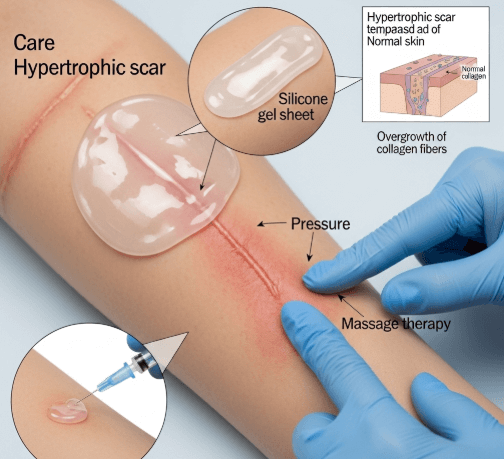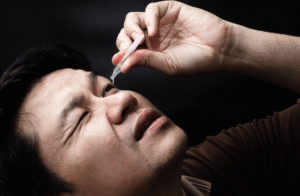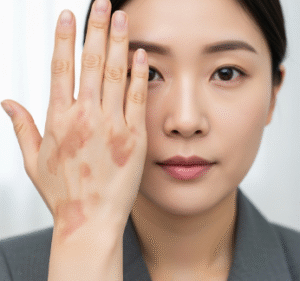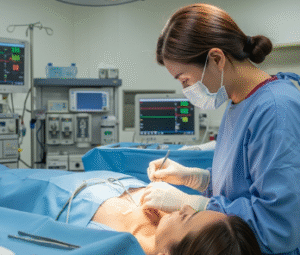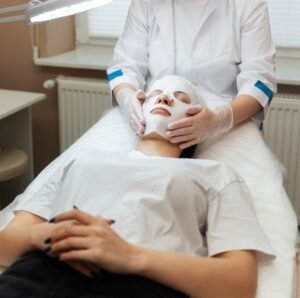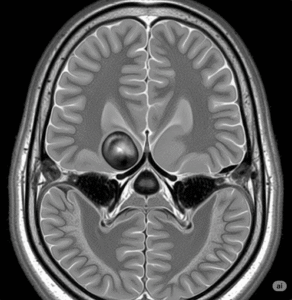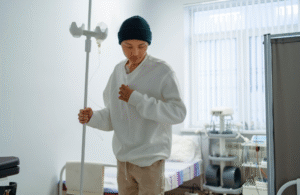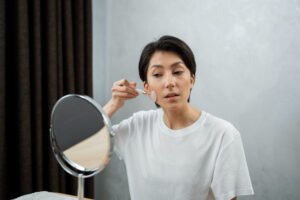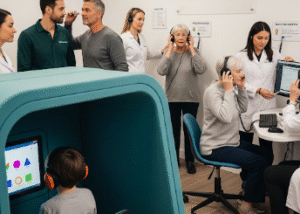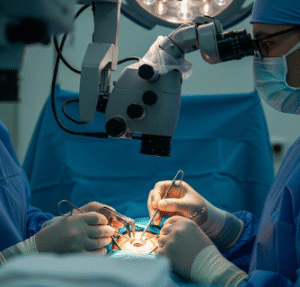What It Is
Defining Hypertrophic Scars
→ A hypertrophic scar is a raised scar that forms when the body produces too much collagen during the healing process.
→ Unlike keloids, hypertrophic scars remain confined to the wound area and do not extend beyond it.
→ They are most common after burns, cuts, surgical incisions, acne, or injuries that penetrate deep layers of the skin.
Key Characteristics
- Raised and thickened but limited to the wound area
- Red or pink in early stages, may fade over time
- Sometimes itchy, tender, or painful
- Can improve naturally over months or years, though not always fully
Why It’s Done
Main Reasons for Treatment
➡ Aesthetic Concerns – Hypertrophic scars are highly visible, especially on the face, chest, or hands.
➡ Physical Discomfort – These scars may feel tight, itchy, or sensitive to touch.
➡ Functional Issues – Large scars near joints can restrict mobility and flexibility.
➡ Preventing Worsening – Early treatment prevents scars from thickening further or becoming permanent.
➡ Emotional Confidence – Addressing hypertrophic scars helps reduce self-consciousness and improves overall quality of life.
Alternatives
Non-Medical Options
- Silicone Gel Sheets or Creams → Commonly recommended for early-stage hypertrophic scars; helps soften and flatten tissue.
- Massage Therapy → Gentle scar massage can improve blood circulation and elasticity.
- Pressure Garments → Often prescribed after burn injuries to reduce scar thickening.
Medical Alternatives
→ If standard treatments do not work, patients may explore:
- Corticosteroid Injections to flatten and soften scar tissue
- Laser Therapy to reduce redness and smooth uneven texture
- Cryotherapy for small scars, freezing excess tissue
- Microneedling with Radiofrequency to stimulate collagen remodeling and reduce thickness
Preparation
Before Treatment
➡ Clinical Assessment – A dermatologist evaluates scar age, size, depth, and skin type.
➡ Patient History – Past wound healing patterns, treatments, and medical conditions are considered.
➡ Skin Conditioning – Some patients may be asked to start with silicone gels or moisturizers before advanced treatments.
➡ Avoid Sun Exposure – Ultraviolet rays can darken scars, making them harder to treat.
➡ Counseling – Patients must understand that scar management is gradual; no single session guarantees complete removal.
How It’s Done
Common Treatment Methods in Korea
1. Corticosteroid Injections
→ One of the most effective and widely used treatments.
- Direct injection into the scar reduces inflammation, itching, and thickness.
- Sessions usually spaced 4–6 weeks apart.
- Works best for newer scars.
2. Laser Therapy
→ Highly advanced in Korean clinics.
- Fractional CO₂ and pulsed-dye lasers are often used.
- Targets scar blood vessels to reduce redness and promote collagen remodeling.
- Often combined with other treatments.
3. Surgical Revision
→ In some cases, scars are surgically removed and the wound is carefully re-closed.
- New closure techniques minimize scar regrowth.
- Usually combined with follow-up treatments like lasers or steroid injections.
4. Cryotherapy
→ Freezing scar tissue with liquid nitrogen.
- Effective for small hypertrophic scars.
- May lighten skin in darker tones.
5. Microneedling with Radiofrequency
→ Popular in Korea due to excellent cosmetic outcomes.
- Tiny needles create micro-channels that stimulate natural healing.
- Combined with radiofrequency, it improves scar texture, elasticity, and thickness.
6. Pressure Therapy and Silicone Dressings
→ Especially for burn-related hypertrophic scars.
- Used continuously for months to gradually flatten the scar.
Recovery
Immediate Recovery
- Steroid Injections → Mild swelling and redness for a day or two.
- Laser Therapy → Redness, warmth, or slight peeling lasting 2–5 days.
- Surgery → Recovery depends on wound size; stitches usually removed after 7–10 days.
- Microneedling → Slight redness or pinpoint bleeding that resolves in 2–3 days.
Long-Term Recovery
→ Improvement is gradual, often requiring multiple sessions.
→ Scar flattening and softening may be visible within a few weeks but full results can take several months.
→ Ongoing use of silicone gels, sun protection, and moisturizers is critical to maintain results.
Complications
Possible Risks
- Recurrence → Hypertrophic scars can thicken again if not properly managed.
- Pigment Changes → Treatments may temporarily lighten or darken skin.
- Infection → Rare but possible after surgical or invasive treatments.
- Pain or Sensitivity → Temporary soreness following injections or microneedling.
- Excessive Thinning → Overuse of corticosteroids may thin the skin in rare cases.
Treatment Options in Korea
Advanced Dermatology Expertise
Korea is renowned for scar management innovation, combining medical science with cosmetic precision. Hypertrophic scar care is widely available in both dermatology hospitals and specialized aesthetic clinics.
Why Korea is a Leader in Scar Care
➡ Cutting-edge laser systems widely used and customized for scar type
➡ Comprehensive protocols that combine injections, lasers, and skincare for optimal results
➡ Personalized treatment plans based on scar severity and patient needs
➡ Strong focus on minimizing recurrence and maximizing cosmetic outcomes
Popular Approaches in Korea
- Combination of laser therapy + steroid injections for enhanced flattening and color correction
- Microneedling with RF for textured or burn-related hypertrophic scars
- Surgical revision + silicone therapy for stubborn scars
- Continuous aftercare programs including scar creams, sunblock, and monitoring
Patient Experience in Korea
- Clinics emphasize comfort and safety, with advanced pain management methods
- Treatments are mostly outpatient, requiring minimal downtime
- Many Korean clinics also provide aftercare kits with medicated gels and creams for at-home scar care
Conclusion
Hypertrophic scar care in Korea is a multi-step, highly specialized process that focuses on both medical effectiveness and cosmetic refinement. With world-class dermatologists and cutting-edge technology, patients can expect significant improvements in scar thickness, redness, and texture.
While hypertrophic scars may not disappear entirely, Korean treatment approaches ensure long-lasting, visible improvement and a better quality of life for patients.

